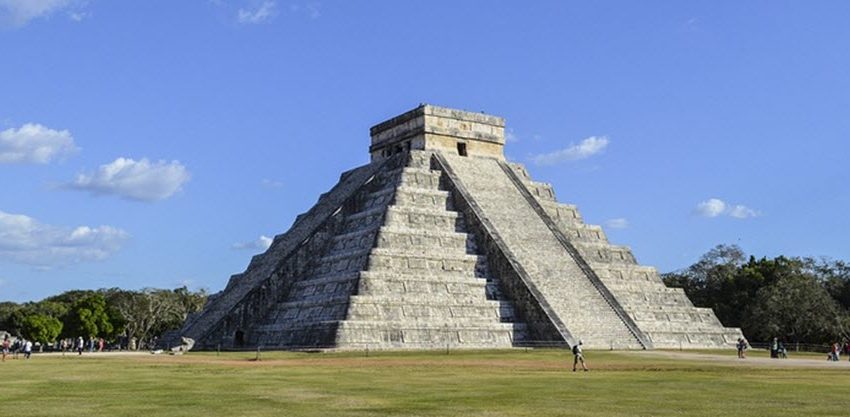Day trading in Mexico
Contents
Day trading from Mexico has grown fast in the past few years, mostly thanks to cheaper internet, more accessible global broker platforms, and a younger population looking for non-traditional income streams. But while the surface makes it look easy—mobile apps, influencers, YouTube tutorials—the deeper reality is more complicated. Traders in Mexico face unique issues with broker access, taxes, currency volatility, and platform reliability that don’t come up in the US or Europe. Most don’t talk about it. The ones who survive it usually don’t have to.
Trading on US markets is the norm for Mexican day traders. The Bolsa Mexicana de Valores (BMV) doesn’t offer much in the way of liquidity or intraday volatility unless you’re trading a few large-cap names like América Móvil or Grupo Bimbo. Most serious traders skip local equities entirely and focus on US stocks, futures, forex, or crypto through offshore brokers.

Broker access and foreign accounts
There are Mexican brokers that offer access to the BMV and some global equities—like GBM, Kuspit, or Actinver—but their platforms usually lack the speed, order types, and charting tools that active day traders need. That’s why most people turn to international brokers: Interactive Brokers, TradeStation, Thinkorswim (through TD Ameritrade), or MetaTrader brokers for forex.
The catch is funding these accounts. Mexican banks aren’t always friendly to international wire transfers, especially if you’re sending money to a U.S.-based broker for something that looks like speculative activity. You’ll need patience, paperwork, and sometimes a workaround—Payoneer, Wise, or crypto conversions are commonly used to bridge the gap. Expect a few weeks of setup just to get a live-funded account in place.
Once you’re in, most global brokers don’t block Mexican residents. But verification steps can take longer, and you’ll want to double-check fee structures, especially for currency conversion and wire withdrawals.
The peso problem
MXN is not the worst currency to hold, but it’s not exactly stable either. Inflation has been volatile, and while the peso has performed better than some emerging market currencies, holding large balances in it comes with obvious risk. Most active traders keep capital in USD—either in their trading accounts or stablecoins when parked.
This also means thinking in dollars. If your expenses are in pesos and your income is in USD, it can feel like you’re constantly running two sets of books. The exchange rate moves enough that your profit in dollars could shrink in pesos by the time it lands in your bank account. That’s something most trading courses won’t warn you about, but it adds real stress if your living expenses depend on monthly withdrawals.
Tax treatment and reporting
Mexico doesn’t have clear-cut tax rules for retail trading profits like the US or UK. It treats trading income as general income, and if you’re using offshore accounts or receiving funds from abroad, you’re expected to declare it. SAT (Servicio de Administración Tributaria) has been ramping up audits and bank cross-checks in recent years, especially for freelancers and digital earners.
Most traders don’t report income until they’re forced to. That doesn’t make it legal—it just means enforcement has gaps. If you’re moving large sums between a foreign broker and a Mexican bank account, expect scrutiny eventually. It’s common for full-time traders to use legal entities or foreign structures to reduce exposure, but this requires legal advice and solid bookkeeping.
Crypto traders in Mexico face even more confusion. While crypto isn’t banned, the regulatory environment is vague. Most gains are technically taxable, but enforcement is inconsistent, and many traders operate under the radar. That may change soon.
Trading hours and time zones
Mexico’s location is one of its hidden advantages. Most of the country sits on Central Time, just one hour behind Eastern Time. That means you can trade US markets without ruining your sleep. Market open is at 8:30am local time, and the close is 3pm. This gives you time to prep in the morning and still have a life in the afternoon.
Forex trading runs nearly 24 hours, but most volume still flows during London and New York sessions. For a trader in Mexico, this overlaps perfectly with normal daytime hours. No night shifts, no 2am alarms. That’s not a small thing—it’s a structural advantage compared to traders in Asia or parts of Europe.
Infrastructure and technical limitations
In most urban areas—Mexico City, Guadalajara, Monterrey—the internet is fast and stable enough for live trading. You’ll rarely lose connection, and most brokers’ platforms run fine. But once you step outside major cities, it gets riskier. Poor bandwidth, power outages, and lag during volatile events are real threats.
Many serious traders invest in mobile hotspots, battery backups, or even dedicated internet lines if they’re treating this professionally. Cheap doesn’t mean reliable, and in Mexico, the cheap route can end up costing you more in missed trades or bad fills.
Trading culture in Mexico
Trading still feels underground in most of Mexico. There’s a growing online community—mostly on Twitter, YouTube, and private Discord groups—but it’s not mainstream. Most people still think of “trading” as gambling or crypto pumping. If you tell your family you’re trading for a living, expect silence or confusion.
That said, a younger wave of traders is building something more serious. Spanish-language content is improving, platforms like TradingView are more accessible, and people are starting to treat trading less like a lottery and more like a skillset. Still, without local regulation, much of the education is self-taught and sometimes wildly inaccurate.
Courses are everywhere—Telegram groups charging for “signals,” influencers showing one-day profits, etc.—but few offer real edge. The ones who make it are usually heads-down, testing strategies and journaling trades rather than following alerts.
Is it realistic to day trade from Mexico?
It is—if you’re patient. Most of the problems you’ll face are outside the charts. Account setup, currency issues, tax ambiguity, and infrastructure gaps are the main friction points. Once those are handled, the actual trading experience is solid. You’ve got the timezone, access to global markets, and enough platform choice to trade however you want.
You won’t find many Mexican traders shouting on YouTube about their 5-minute scalps. But they’re out there—quiet, consistent, and focused on keeping their edge. And for anyone considering it seriously, this global day trading resource gives a good grounding before you step into deeper waters.
Let me know when you’re ready for the next topic.






